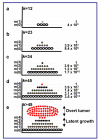On evolutionary origin of cancer
- PMID: 15743536
- PMCID: PMC555547
- DOI: 10.1186/1475-2867-5-5
On evolutionary origin of cancer
Abstract
BACKGROUND: The necessary and sufficient capabilities of cancer cell have been identified. Strikingly, this list does not include one that would seem to be a key property, namely the ability of cancer cells to kill their "host". This is believed to be a self-evident consequence of the other capabilities (e.g., metastasis), although the available evidence suggests a distinct killer function. Taking into account this unlisted property can significantly affect the current paradigm of carcinogenesis. PRESENTATION OF THE HYPOTHESIS: On the assumption that killer function is a key capability of the cancer cell, it is suggested that cancer has evolved as a mechanism of negative selection of mutant alleles of vitally important genes present in population. Similarly to apoptosis, which is an altruistic suicidal act of a damaged cell, cancer is an altruistic suicidal act of an individual who carries dangerous alleles and presents a hazard for genetic stability of the population. From this point of view, apoptosis is not a protection means against cancer as generally believed, but rather they are the first and second lines of defense against genome instability, respectively. TESTING THE HYPOTHESIS: The modern DNA array technology is capable of revealing gene expression profiles responsible for killer function of cancer cell as well as those specific targets in the body that are most strongly affected by the tumor growth. IMPLICATIONS OF THE HYPOTHESIS: This hypothesis suggests new avenues of cancer research as well as principally new therapeutic strategies.
Figures


References
LinkOut - more resources
Full Text Sources
Research Materials

